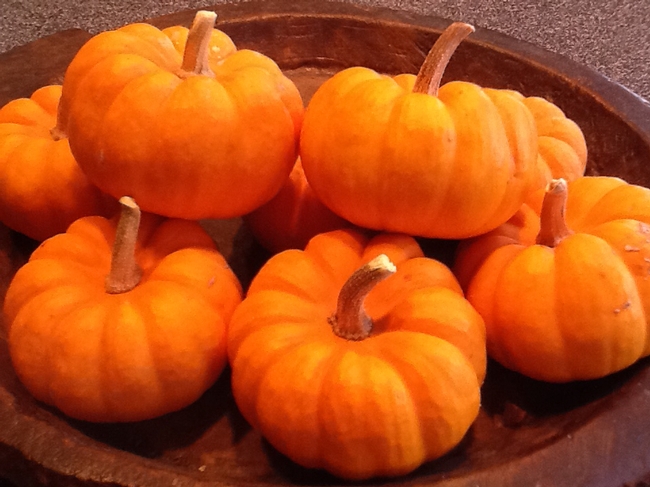PUMPKINS
By Linda Lewis Griffith UCCE Master Gardener
Halloween may be the last thing on your mind. But it's not too early to get your pumpkins in the ground. Pumpkins come in a wide array of sizes, shapes and uses. Tiny Jack-be-Littles fit in the palm of your hand and are perfect for toddlers or seasonal displays. Big Max grows up to 135 pounds. Cinderella Pumpkins are unique French heirlooms that were cultivated by the Pilgrims and served at the second Thanksgiving dinner. Luminas are a ghostly white color; they have a delicious flavor and are excellent for pies. Pumpkins grow best in fertile soil that has been enriched with well-rotted compost and manure. Mound soil into small hills spaced 8 to 10 feet apart. Plant 4 to 5 seeds per hill. Thin to the 2 strongest plants when the seedlings are 3 inches high. Plants are spreading and vinelike with wiry, curly tendrils. They can grow to more than 20 feet. Their leaves are large and shaped like a maple leaf.
Pumpkins have separate male and female flowers on the same plant. The male flowers don't produce fruit; they supply the pollen that fertilizes female flowers. Pollen must be transferred to the female flowers by bees for fruit to develop. Male flowers develop first and can be identified by their long slender stems. Female flowers have a very short stem and miniature fruit at the base of the flower.
Soil should be free from weeds and kept moist throughout the growing season. Avoid getting water on the leaves as it may lead to powdery mildew. You can monogram a pumpkin by scratching a name into the fruit before the shell is hardened (usually in late August or early September). The inscription will callus over and become more obvious as the fruit matures.
Pumpkins are ready for harvest in approximately 100 days. Smaller varieties mature slightly earlier. Larger ones may take up to 120 days.
Cut pumpkins from the vines carefully, leaving 3 or 4 inches of the stem attached; pumpkins without stems may not keep as well.
